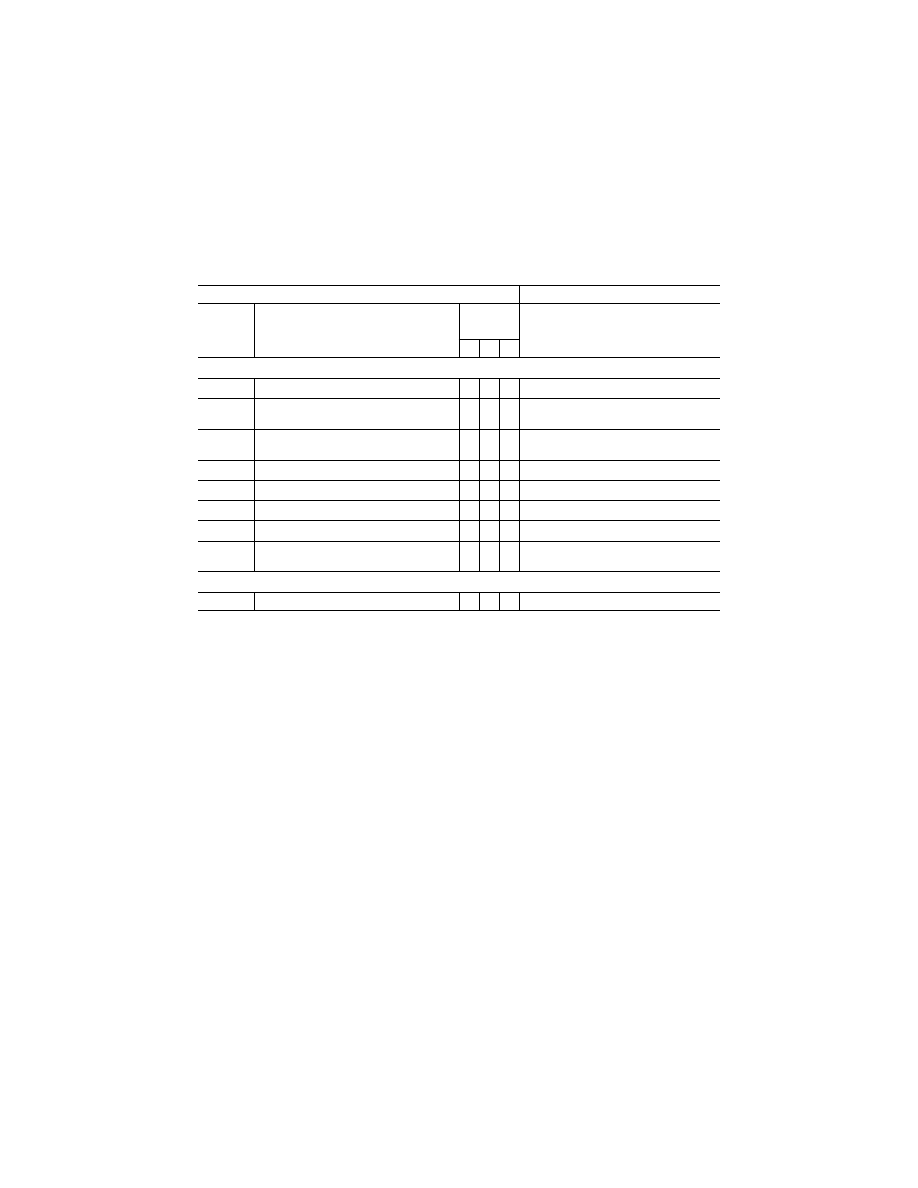
222
14 CFR Ch. I (1–1–19 Edition)
Pt. 60, App. B
T
ABLE
B1C—T
ABLE OF
FTD S
YSTEM
T
ASKS
QPS
REQUIREMENTS
QPS Requirements
Information
Entry No.
Subjective Requirements
In order to be qualified at the FTD qualification
level indicated, the FTD must be able to per-
form at least the tasks associated with that level
of qualification.
FTD level
Notes
4 5 6
1. Instructor Operating Station (IOS).
1.a. .............
Power
switch(es) .................................................
X X X
1.b. .............
Airplane conditions ..............................................
A
X
X e.g., GW, CG, Fuel loading, Systems, Ground
Crew.
1.c. .............
Airports/Runways ................................................
X
X
X e.g., Selection and Presets; Surface and Light-
ing controls if equipped with a visual system.
1.d. .............
Environmental controls ........................................
X
X
X e.g., Temp, Wind.
1.e. .............
Airplane system malfunctions (Insertion/deletion)
A
X
X
1.f. .............
Locks, Freezes, and Repositioning .....................
X
X
X
1.g. .............
Sound Controls. (On/off/adjustment) ...................
X
X
X
1.h. .............
Motion/Control Loading System, as appropriate.
On/off/emergency stop.
A A A
2. Observer Seats/Stations.
2.a. .............
Position/Adjustment/Positive restraint system ....
X
X
X
Note 1:
An ‘‘A’’ in the table indicates that the system, task, or procedure, although not required to be present, may be exam-
ined if the appropriate system is in the FTD and is working properly.
A
TTACHMENT
2
TO
A
PPENDIX
B
TO
P
ART
60—
F
LIGHT
T
RAINING
D
EVICE
(FTD) O
BJECTIVE
T
ESTS
lllllllllllllllllllllll
B
EGIN
I
NFORMATION
1. D
ISCUSSION
a. For the purposes of this attachment, the
flight conditions specified in the Flight Con-
ditions Column of Table B2A, are defined as
follows:
(1) Ground—on ground, independent of air-
plane configuration;
(2) Take-off—gear down with flaps/slats in
any certified takeoff position;
(3) First segment climb—gear down with
flaps/slats in any certified takeoff position
(normally not above 50 ft AGL);
(4) Second segment climb—gear up with
flaps/slats in any certified takeoff position
(normally between 50 ft and 400 ft AGL);
(5) Clean—flaps/slats retracted and gear up;
(6) Cruise—clean configuration at cruise
altitude and airspeed;
(7) Approach—gear up or down with flaps/
slats at any normal approach position as rec-
ommended by the airplane manufacturer;
and
(8) Landing—gear down with flaps/slats in
any certified landing position.
b. The format for numbering the objective
tests in Appendix A, Attachment 2, Table
A2A, and the objective tests in Appendix B,
Attachment 2, Table B2A, is identical. How-
ever, each test required for FFSs is not nec-
essarily required for FTDs. Also, each test
required for FTDs is not necessarily required
for FFSs. Therefore, when a test number (or
series of numbers) is not required, the term
‘‘Reserved’’ is used in the table at that loca-
tion. Following this numbering format pro-
vides a degree of commonality between the
two tables and substantially reduces the po-
tential for confusion when referring to objec-
tive test numbers for either FFSs or FTDs.
c. The reader is encouraged to review the
Airplane Flight Simulator Evaluation Hand-
book, Volumes I and II, published by the
Royal Aeronautical Society, London, UK,
and FAA AC 25–7, as amended, Flight Test
Guide for Certification of Transport Cat-
egory Airplanes, and AC 23–8, as amended,
Flight Test Guide for Certification of Part 23
Airplanes, for references and examples re-
garding flight testing requirements and tech-
niques.
d. If relevant winds are present in the ob-
jective data, the wind vector should be clear-
ly noted as part of the data presentation, ex-
pressed in conventional terminology, and re-
lated to the runway being used for the test.
e. A Level 4 FTD does not require objective
tests and therefore, Level 4 is not addressed
in the following table.
VerDate Sep<11>2014
16:30 Jun 25, 2019
Jkt 247047
PO 00000
Frm 00232
Fmt 8010
Sfmt 8002
Q:\14\14V2.TXT
PC31
kpayne on VMOFRWIN702 with $$_JOB